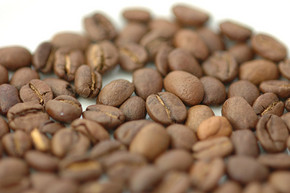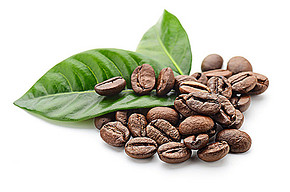What's so unique about Costa Rican coffee?
Follow the caf é (Wechat official account vdailycom) and found that Beautiful Cafe opened a small shop of its own.
In 1816, this small Central American country, Costa Rica, became the first country to have a thriving coffee industry. In 1832, the first batch of coffee exported to Britain arrived through Chile and was named after the Chilean port of Valparaiso. Coffee was Costa Rica's only export from 1846 to 1890 and is still an important cash crop.
As a country with low production (annual exports are about 1.8 million bags, 60 kg per bag; Brazil's annual exports reach 45 million bags), because domestic boutique coffee growers cannot compete with large countries with lower costs, instead, a large number of methods to improve quality and characteristics have been adopted. In recent years, many growers have set up their own small processing plants instead of selling coffee beans to local processing plants. In addition to bringing full traceability. It also increases the growers' innovation ability and attention to quality.
Costa Rica has eight very rich coffee producing areas of different styles: Tarazu, Guanacaster, the western valley, the central valley, the Sanshui River, the Durieba Valley, Orosi and Brenka.

Costa Rica is unique in that it has almost all the climatic and topographic features suitable for coffee cultivation, from the coast (both adjacent to the Atlantic and Pacific oceans) to cloud forests to high mountain tops, so its biodiversity is considered to be the richest of all countries on earth.
Costa Rican coffee belongs to the brightest and sweetest category of coffee and is famous for its clear and transparent taste. With the recent application of honey treatment, the flavor of coffee is becoming richer and thicker!
We usually see the treatment of honey: yellow honey, red honey, black honey.
Yellow honey: about 40% of the pectin is removed; the drying method requires the most direct heat absorption, receives the most light drying, and lasts for about 8 days to reach a stable water content.
Red honey: about 25% of the pectin is removed; it takes longer to dry than yellow honey, and reduces direct exposure to sunlight, even in shading sheds, lasting about 12 days.
Black honey: hardly remove pectin; dry for the longest time, lasting at least 2 weeks, with a cover to avoid too strong sunlight, prevent drying too fast, and make sugar conversion more fully.
Honey treatment gives coffee a mild acidity, soft taste and sweet, high-quality berry flavor! From yellow, red and black, the most obvious difference between them is that one is sweeter than the other, coupled with a richer fruit rhyme, which is deeply loved by everyone's coffee gluttons. Among them, Costa Rican coffee treated with black honey is often a scarce small batch of boutique, it is really enjoyable to drink a cup!
Important Notice :
前街咖啡 FrontStreet Coffee has moved to new addredd:
FrontStreet Coffee Address: 315,Donghua East Road,GuangZhou
Tel:020 38364473
- Prev

Introduction of coffee beans in Shenhua Manor, Costa Rica
Follow the caf é (Wechat official account vdailycom) found that the beautiful cafe opened its own shop Coffee name: Costa Rica Tara Zhu Shenhua Manor Red Honey treatment Rose Summer Costa Rica Tarrazu Flor De Santos Geisha Red Honey Coffee producing area: Tarrazu planting altitude: 1850 m Coffee varieties: Geisha grading Standard: SHB picking
- Next

Brief introduction of Tarazhu Costa Rican Coffee
Following Cafe (official Wechat account vdailycom) found that Costa Rica has a small shop of its own, bordering the Caribbean Sea on the east and the Pacific Ocean on the west, as the country's name means in Spanish: fertile shores. Located in the south of SanJos, the capital of Tarasu, Costa Rica is one of the most valued coffee growers in the country. Tarasu (Tarrazu)
Related
- Detailed explanation of Jadeite planting Land in Panamanian Jadeite Manor introduction to the grading system of Jadeite competitive bidding, Red bid, Green bid and Rose Summer
- Story of Coffee planting in Brenka region of Costa Rica Stonehenge Manor anaerobic heavy honey treatment of flavor mouth
- What's on the barrel of Blue Mountain Coffee beans?
- Can American coffee also pull flowers? How to use hot American style to pull out a good-looking pattern?
- Can you make a cold extract with coffee beans? What is the right proportion for cold-extracted coffee formula?
- Indonesian PWN Gold Mandrine Coffee Origin Features Flavor How to Chong? Mandolin coffee is American.
- A brief introduction to the flavor characteristics of Brazilian yellow bourbon coffee beans
- What is the effect of different water quality on the flavor of cold-extracted coffee? What kind of water is best for brewing coffee?
- Why do you think of Rose Summer whenever you mention Panamanian coffee?
- Introduction to the characteristics of authentic blue mountain coffee bean producing areas? What is the CIB Coffee Authority in Jamaica?

